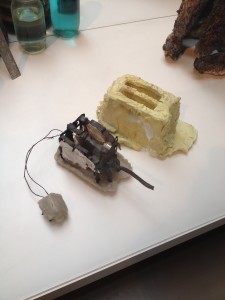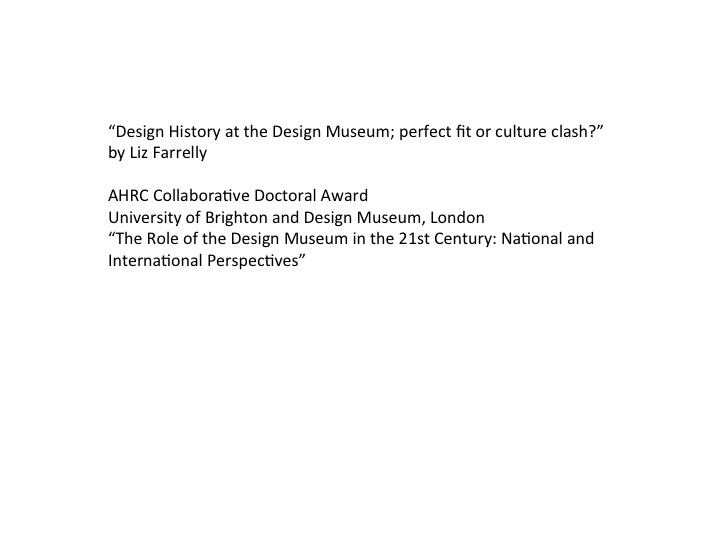Design Museums for the 21st Century; a round table discussion
Trapholt Museum and University of Southern Denmark
Kolding, Denmark
23 January 2014
When your PhD supervisor tells you to go to Denmark in freezing January, you go; the icing on the cake was that it started snowing as we sat in the Trapholt Museum’s meeting room, with its giant picture window, and everyone went “aaaahhhh”. The Museum is housed in a playfully modern building, boasts an unrivalled collection of Danish chairs and is next door to Arne Jacobsen’s summer house (sadly I didn’t get inside, this time), so that made up for the weather. I also got to see the thought-provoking and unprecedented touring exhibition, Out to Sea? The Plastic Garbage Project, which seemed totally appropriate in a country that loves fish.
My reporting of the round table is from my notes, with additional my comments; where they are short and in the same paragraph, they’re in [square brackets].
My supervisor is University of Brighton’s Professor of Design Culture, Guy Julier, and he is also Visiting Professor at University of Southern Denmark. He’d gathered his grad students from Denmark and Brighton, along with “expert witnesses” from the museum world in Denmark and the UK, to discuss design. Guy opened the proceedings by telling us that design museums were “mushrooming”. He counted 45 European design museums with more projects for new, expanding and relocating institutions still in the pipeline, mentioning that Mexico City’s MUMEDI, tripled its visitor numbers by rebranding as a “design museum”. He talked about the tension in museums between the contemporary and history, design and design history, and that a contextual approach to design in museums was the way forward, mixing the excitement of innovation with the pragmatism of solving problems, and heritage and continuity with new technology and innovative design fields. Finally, he pointed to the Index Awards (a Danish initiative) as evidence of design shifting away from a fascination with “heroes”. […and by extension, a recognised canon?]
Continue reading























